I'm really looking forward to this class -- it should be a lot of fun and, I hope, a very useful exercise in critical thinking and communication.
|
My presentation ("Anthropology and Pseudoscience") at Mercer University on Friday went well, I think. Never having been there before, I'm not sure how the crowd I drew rated in terms of size, but given that the talk was at 4:30 on a Friday I was happy with the attendance and the response that I got. The flying watermelons went over well. It's the little things that make the difference. One of the things I emphasized in my talk was the need to create what I called "persistent resources" to provide counter-points to the nonsense. When the genuinely curious search for information about a specific claim or idea, ideally they will be able to find something that provides a reasoned, evidence-based analysis. Making critical materials easier to discover by assembling them in a single place was the rationale behind creating The Argumentative Archaeologist website. Traffic on that site seems to be steadily increasing, and I'm hoping it continues to grow and be useful. I'll be facilitating the construction of more critical infrastructure in conjunction with the Forbidden Archaeology (ANTH 291) class that I'll be teaching this fall. The students will be tasked with writing and editing a series of blog posts on various topics, and my plan is to make those available on a "Forbidden Archaeology 2016" website that we'll create and fill with content. I'm hoping we can branch out from blogs and also do some things with video. YouTube is an important battleground that I have yet to try to really understand or enter. This is a new class, though, so we'll have to see how things work out. The students will be doing final projects, so maybe I can provide an option for production of a video.
I'm really looking forward to this class -- it should be a lot of fun and, I hope, a very useful exercise in critical thinking and communication. This has been a busy couple of weeks and the blog writing has once again slipped down the priority list. Preparing two "extra" presentations this month (one for the Archaeological Society of South Carolina meeting last weekend and one for my talk at Mercer University tomorrow) were at the top of the list along with keeping the Kirk data collection going, teaching my class, and falsely promising to get caught up on emails. 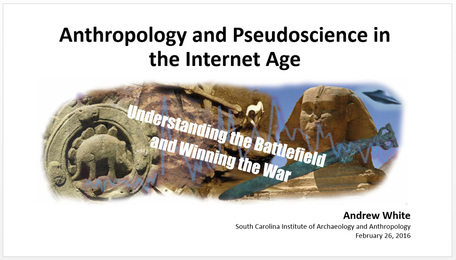 The Mercer presentation is going to be fun. I'm sure I'm several standard deviations from the mean in terms of my interest in thinking and talking about anthropology and pseudoscience, so it will be a struggle to get my presentation down to length. I was told I would have to reduce the talk from its original 8 hours to about 45 minutes. My last counter-offer was to meet somewhere in the middle, say around 6.5 hours. I didn't hear anything back after that, so I think we've reached agreement. The organizer (Craig Byron) is an old friend of mine, so I'm sure he'll understand if I have to go to 7 hours or so to make all my points. That will still get us done before midnight, even allowing for a five minute bathroom break. Don't worry, I'm kidding. You should still come to my talk, if only for my animations of flying watermelons. I promise I won't take up a single minute more than three hours of your time. On another topic, I have been happily reading the comments on my blog post reacting to Chris Moore's American Antiquity paper. If you're interested in Paleoindian, hunter-gatherers, and/or the Pleistocene/Holocene transition in the Eastern Woodlands you should check it out -- it's nice to see professionals chime in and share information and ideas in a public setting like a blog. Hopefully we can get that happening more often. I want to respond to and/or follow up on several of the comments, but I've been forcing myself to take care of other business first (see above). Here's another thing I'd like to have a good look at: this new paper on Fishtail projectile points from Brazil by Daniel Loponte, Mercedes Okumura, and Mirian Carbonera. It has metric data, nice images, maps, and a summary of what's known about dating. I don't know much about Fishtails -- the last thing I can recall reading about them (some time ago) was the 1999 "Geographic Variation in Fluted Projectile Points: A Hemispheric Perspective" by Juliet Morrow and Toby Morrow (American Antiquity 64(2):215-230). It will be interesting to read the 1999 paper again and look at the new paper. 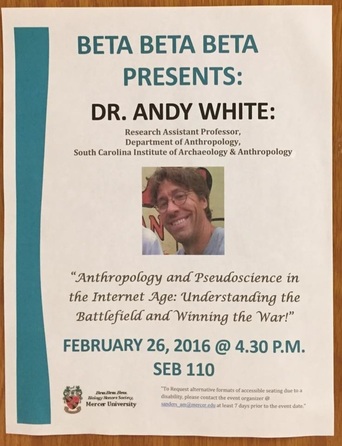 I'll be driving down to Macon, Georgia, at the end of the week to give an invited talk at Mercer University titled "Anthropology and Pseudoscience in the Internet Age: Understanding the Battlefield and Winning the War." This will be my first presentation on this subject, so I've got some prep to do. If you follow the blog and you're reading this, however, you know that I love writing about this subject. Pulling the presentation together won't feel much like work. The hardest part will probably be winnowing down what I want to say. I could give a nine-part lecture on #Swordgate alone at this point. If the presentation turns out well I'll probably post the Powerpoint after I give it. If they throw tomatoes at me I probably won't. Either way I think I'll still get a free dinner out of the deal.
What if the Clovis adaptation in the Eastern Woodlands had nothing substantive whatsoever to do with mammoths and mastodons?
What if all of those dioramas and illustrations of Paleoindian peoples swarming a mastodon mired in the muck are complete baloney? What if one of our most popular baseline notions about Clovis in the east is totally wrong?
The thought isn't an original one, of course, but one that I've been thinking about since listening to a presentation by Christopher Moore (SCIAA colleague) at the Archaeological Society of South Carolina (ASSC) meeting on Saturday. Moore is the senior author of a recent American Antiquity paper (which is unfortunately behind a paywall) that presents protein residue analysis of 142 hafted bifaces (i.e., stone projectile points/knives) from the Savannah River area of South Carolina and Georgia. Protein residue analysis uses chemical tests to identify trace residues left on stone tools through contact with the blood of various groups of animals.
Here is a summary figure from the published paper:
The results that Moore et al. present are striking for two main reasons. First, there is positive evidence for the exploitation of bison in the region during the Paleoindian through Middle Archaic periods. Second, there are no indications that any of the Paleoindian tools they examined were involved with processing proboscideans (i.e., mammoths and mastodons).
As explained in the American Antiquity paper, the positive evidence for bison populations in the region in the Late Pleistocene is consistent with several other data points (including previous protein residue studies and radiocarbon-dated remains such as the Wacissa bison). The new residue data also support the continued presence of bison in the region into the mid-Holocene. That's pretty interesting to me, as it suggests that the exploitation of a large game animal that is more-or-less invisible in the faunal records (both archaeological and natural) may have been important to the food economies of the Archaic peoples I'm keenly interested in understanding. And what about the absence of hits for proboscidean? That's pretty interesting as well. Near the end of his ASSC presentation, Moore informally posed a great "what if" question (and I'm paraphrasing here): what if the evidence for human involvement with mammoths/mastodons in eastern North America actually pertains to pre-Clovis rather than Clovis peoples? For me, pondering that question was one of those nice "wait a @#!%*$# second . . ." moments that happens every so often in science. What if we have not just exaggerated the embrace between Clovis and megafauna in the east, but allowed our romantic notions (and the very clear evidence of Clovis-age megafaunal predation in the west) to blind us to the real pattern that's present? Impossible, you say? Let's ask a series of questions. I'll give you the answers based on what I know off the top of my head and what I have time to assemble on Monday morning of a busy week. Please correct me if I'm wrong on something or help me add things I've left out -- I'm not making any claim that this listing of evidence is exhaustive. Note: when I say "eastern North America" I mean east of the Mississippi River. Question: Are there any direct associations between Clovis stone tools and mammoth/mastodon remains in eastern North America? Answer: No. As far as I know, Kimmswick (Missouri) is the farthest east Clovis-associated megafaunal kill site. Question: Are there any human-butchered mastodon/mammoth remains in eastern North America that have been dated to the Clovis period (i.e., 11,050-10,800 radiocarbon years before present [RCYBP]; ~13,250-12,800 Calendar years before present; ~11,300-10,850 BC)? Answer: Not that I know of off the top of my head. The eastern cases of purported mastodon/mammoth butchery of which I am aware pre-date the known age range of Clovis. Here are some examples:
Question: Is there any direct evidence that mammoths/mastodons survived into Clovis times in eastern North America? Answer: Yes. There are directly-dated mammoth and mastodon remains that demonstrate that proboscideans survived into and beyond Clovis times. The period 10,500-10,000 RCYBP (i.e., post Clovis) is probably a reasonable extinction window for mastodons in the east. Here, for example, is a report of a mastodon from northern Indiana dated to about 10,000 RCYBP. Question: Is there any direct evidence that Clovis peoples used parts of mammoths/mastodons obtained from recently deceased animals? Answer: Yes, apparently. There are ivory and bone tools from Florida that are attributed to Clovis. Here is a quote from a paper by Bruce Bradley:
"While most of the known specimens were recovered from stratigraphically mixed deposits, recent archaeological excavations have found them in late Pleistocene deposits directly associated with extinct fauna, including mammoth and mastodon. Flaked stone projectile points and other tools are also associated with these artifacts. Projectile point types commonly include Clovis fluted and Suwanee."
I don't have the time to delve into the literature right now and investigate the nature of the associations between the ivory tools and the Paleoindian points, or to see if any of the ivory tools have been directly dated.
So there you go.
It seems pretty clear that Clovis peoples existed on the landscape (or were at least present in eastern North America at the same time) as proboscideans. They apparently used parts of those animals to fashion tools. But the case for active Clovis-age predation of mammoths and mastodons continues to be based on circumstantial evidence. As more and more purported proboscidean butchery sites of pre-Clovis age are reported from the Eastern Woodlands, it seems less likely that the east-west contrast in megafaunal kill sites is solely the result of a preservation bias: it's not the elephants that are missing, but the direct evidence that Clovis peoples hunted them. If we take mammoths and mastodons out of the Clovis picture, there's a lot of explaining to do. What was the point of all that beautiful technology? I was one of several junior co-authors on a paper (Speth et al. 2013) that attempted a political re-imagining of Early Paleoindian fluted point technologies. While I'm not convinced by all the arguments in that paper, I think it was a useful exercise. There are other alternatives to the dominant "Clovis meat machine" model that can be constructed. And what if bison was an important game animal in some portions of the Eastern Woodlands into the Middle Archaic? What if bone preservation issues really are part of the problem for our interpretations of the Early and Middle Holocene and we've been unable to see (and therefore to factor into our models) a large herbivore that may have been a huge part of the subsistence economies of early hunting-gathering societies in the region? That deserves a very hard look. I've used all the time I can spare to write about this today. I'm hoping some of you find this question interesting and point out things I'm not aware of. I'll be returning to this as I have time - it's a pretty cool set of questions to think about.
Moore, C., Brooks, M., Kimball, L., Newman, M., & Kooyman, B. (2016). Early Hunter-Gatherer Tool Use and Animal Exploitation: Protein and Microwear Evidence from the Central Savannah River Valley American Antiquity, 81 (1), 132-147 DOI: 10.7183/0002-7316.81.1.132
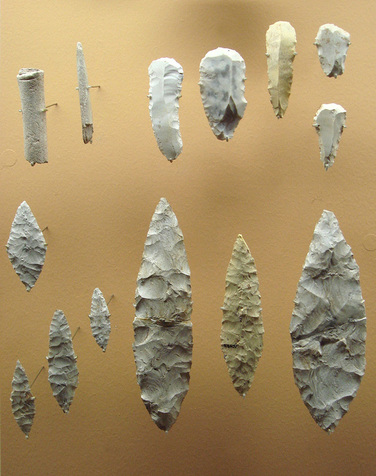 The standard illustration of Solutrean tools (Musee d'Archeologie Nationale). The standard illustration of Solutrean tools (Musee d'Archeologie Nationale). Back in September, I wrote this short post about the announcement of an upcoming film called The Solutrean. I have a Google Alert set up for "Solutrean," so when there's a press release about the movie it shows up in my inbox. I also have a Google Alert set up for my own name, just in case. I hope no-one is getting me confused with the Vicar of Baghdad or Nebraska Cornhusker's guard Andrew White III. Those are the Andrew Whites that make the news routinely. A story two days ago seems to answer the question of whether The Solutrean will have anything to do with the Solutrean Hypothesis with a big "yes:" "Inspired by the idea tossed around by some folks that Europeans settled in North America over 20,000 years ago, the movie . . . tells the Ice Age set story about a hunting trip the goes bad, and the tough journey home that follows." And in this story: "Specifically, the title “Solutrean” is a nod to a hypothesis written by scholars who believe that Europeans settled America somewhere around 20,000 years ago." It sounds to me like they're writing from the same press release. So the film is, in at least some way, about the Solutrean Hypothesis. I'm interested in the Solutrean Hypothesis (the idea that Upper Paleolithic peoples from western Europe colonized eastern North America sometime during the period 21,000 to 17,000 years ago) for a couple of different reasons. First, as a scientific idea, it relates directly to questions about the peopling of the New World and the earliest hunter-gatherers in the Eastern Woodlands. Like many other archaeologists, I'm open to possibility but remain unconvinced and unimpressed by the positive evidence that's been put forth so far (e.g., the Cinmar biface, the other bi-points reportedly recovered from Chesapeake Bay area, the genetic data, etc.). There have been reports of the discovery of Solutrean assemblages in sites with good context in eastern North America, but (as far as I know) those reports have been thus far limited to stories in the popular media (this story in Popular Archaeology, for example -- edited since I wrote about it here). I can't speak for others, but real publication of those sites is something I'm eagerly awaiting. Not everyone is as skeptical as me. Some professional archaeologists apparently are convinced by what they've see so far, and it's pretty clear that the Solutrean Hypothesis has a strong following among non-professionals. My sense from comments I get on this blog is that many of you out there feel that the burden of proof has already been satisfied. I disagree, obviously, and I think the contrast between how professionals and non-professionals generally view the Soloutrean Hypothesis and the strength of the evidence for it illustrates a good degree of daylight between how professional archaeologists and the public at large evaluate ideas about the past. I've been accused of "attacking" the Solutrean Hypothesis because I have expressed skepticism about the evidence, when, in reality, such skepticism is a basic, fundamental part of the process of doing science. Critical evaluation of positive material evidence is absolutely essential to the whole endeavor of understanding the past. I'm not sure when the Solutrean Hypothesis became so sacred and beloved that it was no longer permissible to ask questions like "what is that artifact really telling us?" or "what is the basis of that assertion?" News flash: those kinds of questions are never out of line. The Solutrean Hypothesis is far from being settled science. And, even if does turn out to be correct (i.e., the null hypothesis of "no North American visit by Solutrean-age peoples from Europe" is falsified by a good site), the door will never close on asking pertinent questions about the evidence and the interpretation of that evidence. So now that we know that The Solutrean will indeed consciously embrace the Solutrean Hypothesis. It's a movie, of course, not science. But it will be interesting to see how the characters and story of The Solutrean engage and reflect both the scientific and non-scientific parts of the story of the Solutrean Hypothesis. What will the Solutreans look like? Will they encounter any other peoples in their journeys? Will they drop the Cinmar biface while traversing the Atlantic Shelf? We shall see. 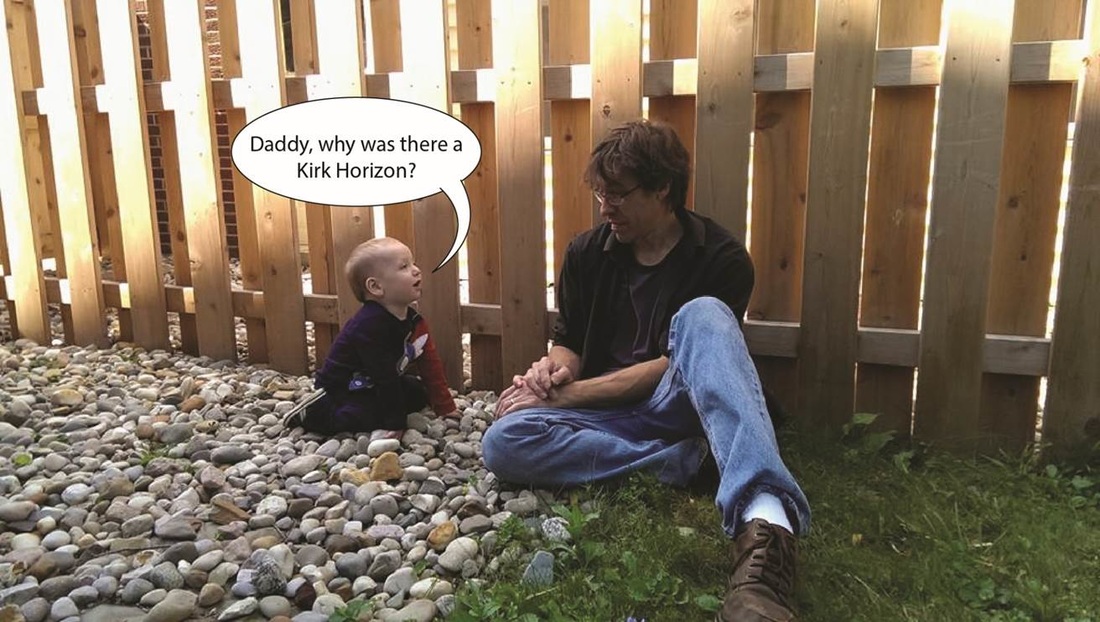 Today I'll be giving a short presentation at the annual meeting of the Archaeological Society of South Carolina. Being a new transplant to South Carolina, this will be my first time attending the meeting. I'm looking forward to meeting my new colleagues from around the state and hearing about what they're working on. I decided to talk about the Kirk Project at today's meeting. Although I've been working on it steadily over the last few weeks, my energies so far have been channeled into prepping the database and streamlining the process for producing 3D models. So, unfortunately, I don't yet have any coherent data or analysis to present. My presentation is an informal discussion of the question of the Kirk Horizon and what we can do to address it. Here's a pdf of the slides I'll be talking from today. Unfortunately I ran out of time to provide complete citations for the parenthetical references. I'll fill those in and provide a complete version later. 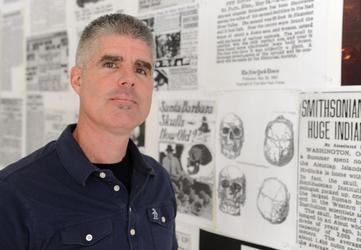 I am happy to announce that Jim Vieira, perhaps best known for his role in the History Channel program "Search for the Lost Giants," has agreed to participate in the Forbidden Archaeology class that I will be teaching at South Carolina in the fall of 2016. I've been writing about "giants" for over a year now and I've gone at Vieira's ideas several times. We had an enjoyable phone conversation a week or two ago about "double rows of teeth" and other things connected to giants, science, and fringe research in general. Without pretending to speak for him, I'll just say that I got the sense that his ideas about giants have changed/developed somewhat over the past few years. I look forward to hearing his current thoughts and seeing how he interacts with the students in the class. Vieria joins Scott Wolter in taking me up on my open offer to "fringe" researchers to participate in my class. I'm still working on refining the syllabus. Things seem to be settling in nicely for covering three main topics this time around: giants, Ice Age civilization (i.e., the existence of a progenitor civilization or "mother culture"), and pre-Columbian transoceanic contact between the New World and the Old World. I've got Vieira penciled in for September (the month of giants) and Wolter for November. My draft syllabus has Fingerprints of the Gods as the book we'll be reading and critiquing (and blogging about) for the section of the class dealing with Ice Age civilization, but I think I'd like to change that up and go with a book that hasn't yet been thoroughly examined with a critical eye. A switch will be even more likely if I can find a book that fits the bill written by an author willing to participate in the class. Ideas? Let me know. To undergraduates at South Carolina: this is going to be a good one! Although this is listed as an archaeology course (because it deals with evidence about what happened in the past), it is weighted heavily as an exercise in critical thinking and communication. We're going to use historic, anthropological, and scientific frameworks to assess and evaluate a variety of claims about the past that are not part of mainstream thinking. Where did these ideas and claims come from? What kind of evidence could prove a given claim to be false? How are the claims connected to social, political, and financial agendas? Is there is a worldwide conspiracy among academics to suppress knowledge about what really happened in the past? What can independently be shown to be wrong and what cannot? We will engage with and evaluate “fringe” claims about the past through readings, discussions, online research and writing, and guest appearances. Forbidden Archaeology (ANTH 291) will meet MWF at 9:40-10:30. I'll post the syllabus when I get it completed. I've been working on laying the groundwork for the Kirk Project. I've created a new "Kirk Project" page to organize my various blog posts on the subject as well as house a list of the 3D models I've created and the the current distribution map of the sample (I've also created a sub-page just for the models). I've also prepared some guidelines for submitting data. Here they are (and here is a pdf file of the same information): The Kirk Project Data Submission Guidelines (2/12/2016) The Kirk Project is an online initiative to assemble a pan-Eastern dataset of primary data about projectile points associated with the Early Archaic “Kirk Horizon” (dating to about 8,800-6,600 BC). The Kirk Horizon is marked by a distribution of Kirk Corner Notched points that extends across a huge area, from the lower Great Lakes to the Florida Keys. Its existence has been noted for over four decades (i.e., at least since James Tuck’s 1974 paper “Early Archaic Horizons in Eastern North America”). There has never been a concerted effort to assemble a dataset of sufficient detail and spatial scope to allow us to characterize and analyze the kinds, amounts, and spatial components of variability among these points. The goal of the Kirk Project is assemble such a dataset. What Information is Useful? In order to be useful to the project, information about Kirk points must have at least two components:
If we don’t know where it came from and/or we can’t pull size/shape data from it, the information will be of very limited usefulness to the project and, in my judgement, not worth including. The presence of a third piece of information (lithic raw material) is highly desirable but not necessary for inclusion. NOTE: incomplete/broken points are still useful as long as they retain enough diagnostic characteristics to be lumped into a broad “Kirk” category. If you can tell it’s a Kirk and you know where it came from, chances are that it retains some measurable/classifiable features that would be useful to know about. A Brief Description of the Database The main database for the Kirk Project will be a continuation of the relational database I used to record points in northern Indiana and, later, for my dissertation. Each point in the database (Kirk or otherwise) gets a unique ID number that makes it distinct from all other points. The database includes a variety of tables that are linked together (see figure). The main table is “Artifact_Data_Non_metric.” This table stores the basic information about the point including ID number, other associated “external” numbers (i.e., assigned in collections or publications), general typological classification, raw material, county-level provenience, and some basic non-metric attributes (presence/absence of basal grinding; presence/absence of beveled blade edges, etc.). As shown in the diagram, several of the fields in “Artifact_Data_Non_metric” link to other tables. The field “County” links to a table containing the approximate UTM coordinates of the center of the county. The field “ID_No” links to a table containing metric data that I derived from artifact images (for my dissertation). The structure of the database will undoubtedly change as the project develops. The full database contains some information (such as site-level coordinates and information about personal collections) that will not be made publicly available. To make the primary data accessible and usable, I will design a query to produce a dataset containing all the Kirk points in the database by unique ID number. Information for each point will include, minimally, other identifying numbers, county-level provenience (and associated UTM coordinates), raw material information, non-metric attributes, available metric data, and links to 3D models if available. I’ll have to figure out how to store and make accessible online all the images that will accompany a spreadsheet of the data. How Do I Submit Data? 2D Image submission: Each point submitted must be represented by a good-quality, plan view photograph of the point accompanied by a metric scale. Please name the image files with your last name and unique, sequential numbers (for example, Joan Smith submits images of three Kirk points and labels them “Smith 1,” “Smith 2,” and “Smith 3”). 3D model submission: Points submitted as 3D models should be numbered the same as images (for example, Joan Smith submits models of three Kirk points that are different than those in the images she submitted and labels them “Smith 4,” “Smith 5,” and “Smith 6”). Save models in STL format. Both regular 2D images and 3D models should be accompanied by a spreadsheet or table that lists the images/models by their filenames and provides the following information:
Where Do I Send Data? Email your 2D images and spreadsheets to Andy White: [email protected]. To transfer 3D models, use an upload/display/download service like Sketchfab (www.sketchfab.com). Sketchfab lets you upload models < 50 MB for free.
I've uploaded a processed and simplified 3D model of the hilt of the Italian eBay sword (Sword 4 in the Fake Hercules Sword database) to Sketchfab. Like I did for the California sword model, I cut the model off where the blade meets the guard so I could calculate the volume and surface area of just the hilt.
Both of the 3D models are downloaded, so they can now be directly compared by anyone in the world who has access to a computer and software. I'm still new to the 3D modeling game, so I'm still exploring what software options are out there. It turns out there are many free 3D mesh processing and analysis packages available emphasizing different aspects of what 3D models can be used for (e.g. creative sculpting, computer-aided design, inspection of parts, etc.).
Because the various types of swords seem to form a time sequence that gets progressively smaller (probably due to a natural generation-to-generation reductions in size that is a result of a cast being smaller than the mold it was made in), I wanted to compare the volume and surface area of the models. Both of those are easy analytical steps. It turns out that the California sword model actually has a smaller volume (105,824 cubic mm) than the Italian eBay sword model (110,657 cubic mm), despite having a greater surface area (27,588 square mm for California vs. 26,850 square mm for Italian eBay). The Italian eBay sword hilt is clearly smaller than the Italian California sword hilt in terms of linear metrics (about 2.0 percent) and surface area (the 738 square mm difference is about 2.7 percent). Perhaps the greater volume per unit of surface area of the Italian eBay sword is related to the "smoothing out" of details and fissures as a Type F parent was used to produce a mold for the Type J generation of swords. The thing to do to investigate, I think, would be to find some software that can "subtract" one model from another and see where the differences are if they're scaled to the same size. I'm sure there is software out there that can do that, but I don't know what it is yet or how to do it. Suggestions welcome! I'm sure the American Anthropological Association (AAA) does a lot of great things. I'm not a member even though the AAA is the flagship association of my discipline. I joined at one point because I had to attend the meetings for job interviews, but I let my membership lapse soon after because I couldn't see that the benefits justified the $200 annual dues. Along with the high price tag (and the regressive dues structure), several "what the hell, AAA?" moments have dampened my enthusiasm. The most notable was the removal of the word "science" from the AAA's long-range plan in 2010. I'm an anthropologist, an archaeologist, and a scientist. It doesn't thrill me that the AAA apparently finds the word "science" too prickly to embrace. Here's another one for the "what the hell, AAA?" pile. This morning on Facebook, one of my biological anthropology friends posted a photo of a new poster printed by the AAA to celebrate World Anthropology Day: Look at the description of physical anthropology: "Physical Anthropology + Studies animal origins and the biologically determined nature of humankind." Animal origins? Biologically determined nature? Seriously, AAA?
That definition in no way reflects the objects of study or the questions of physical/biological anthropology. It is so dumb, in fact, that it's hard to even dissect how wrong it really is. The last time I checked, multicellular, eukaryotic organisms of the kingdom Animalia (aka "animals") originated over 600 million years ago. Perhaps that has changed, however, and I'm not up to date. I wouldn't know, you see, because I'm an anthropologist AND ANIMAL ORIGINS IS NOT WHAT I STUDY. I don't know what percentage of physical anthropologists would say they are studying the "biologically determined nature of humankind," but it certainly would not be large. Does the study of the origins and meaning of human variation constitute the study of the "biologically determined nature of humankind"? What about the study of human evolution? What about the study of health, demography, fertility, mortality? I don't do physical anthropology full time, but I've done it in the past (as both an undergraduate and for my M.A. thesis) and I teach aspects of it in my undergraduate classes now. I chafe at the definition on that poster, and I'm betting a lot of my physical anthropology friends will also not look kindly upon it. How did it get on there? How in the world does the AAA produce a poster, apparently intended to educate the public, that says that physical anthropologists study the "origins of animals" and the "biologically determined nature of humankind"? I just don't get it. I'm glad I didn't help pay for it. |
All views expressed in my blog posts are my own. The views of those that comment are their own. That's how it works.
I reserve the right to take down comments that I deem to be defamatory or harassing. Andy White
Email me: [email protected] Sick of the woo? Want to help keep honest and open dialogue about pseudo-archaeology on the internet? Please consider contributing to Woo War Two.
Follow updates on posts related to giants on the Modern Mythology of Giants page on Facebook.
Archives
January 2024
Categories
All
|
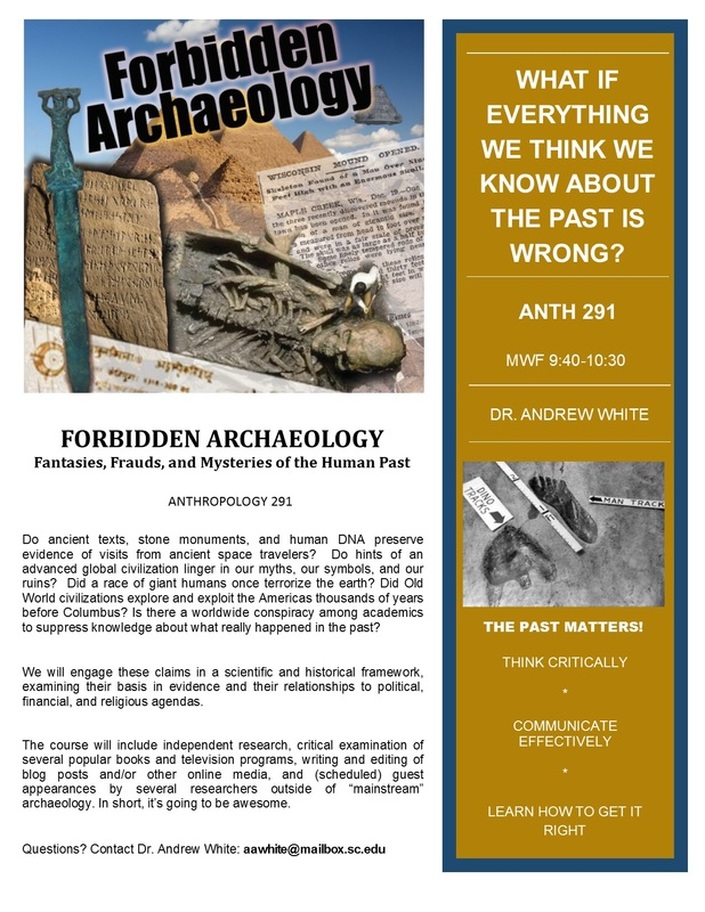
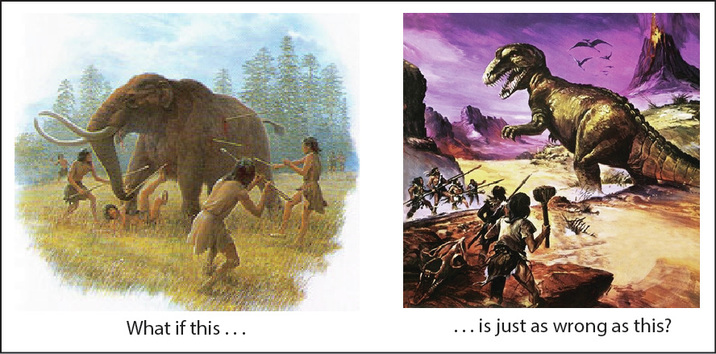
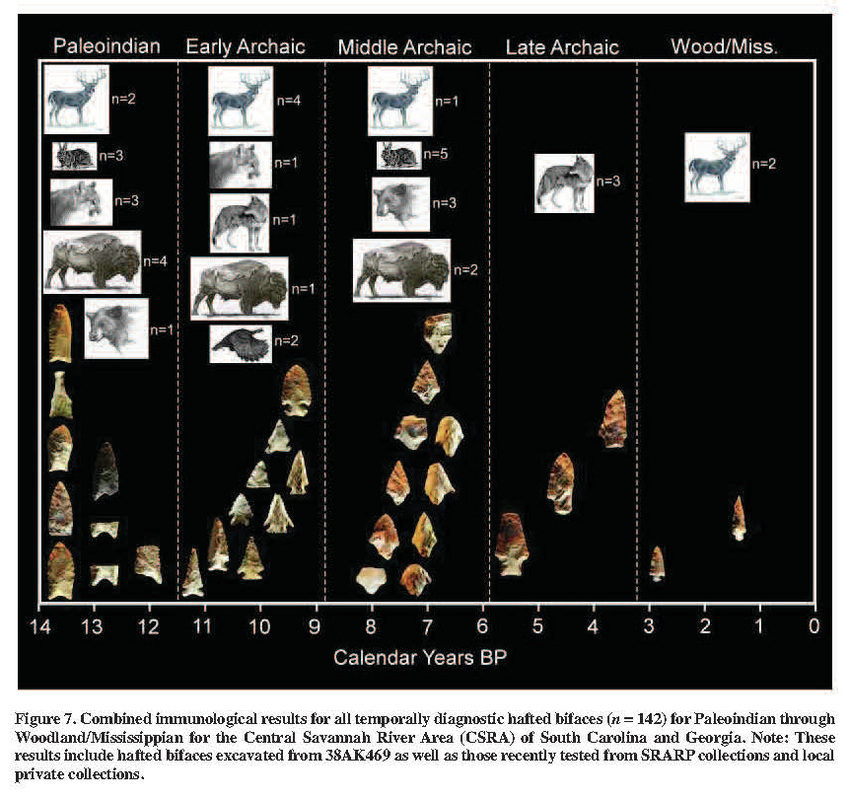
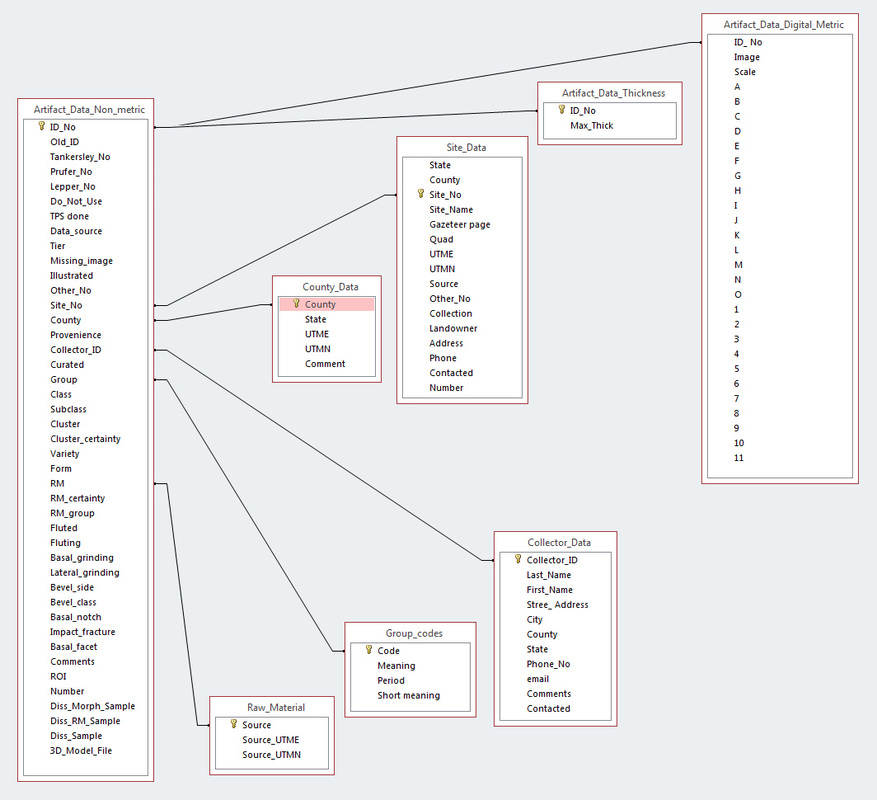

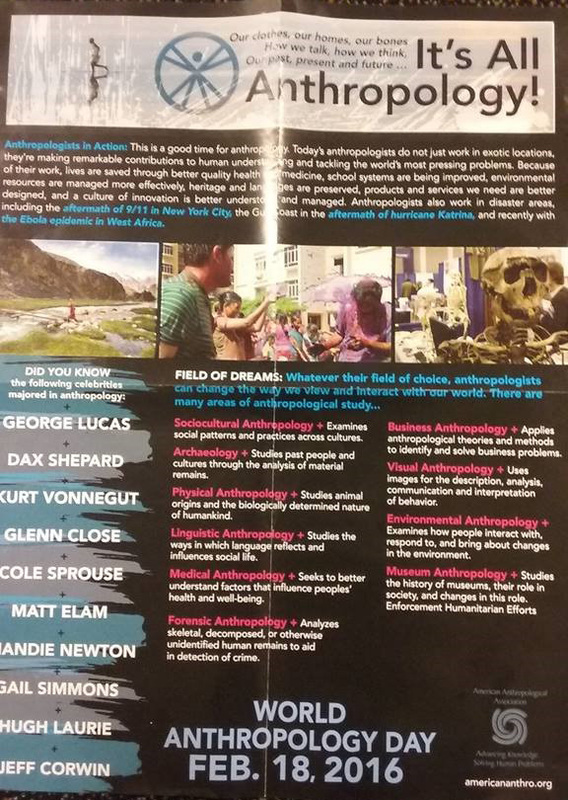


 RSS Feed
RSS Feed
